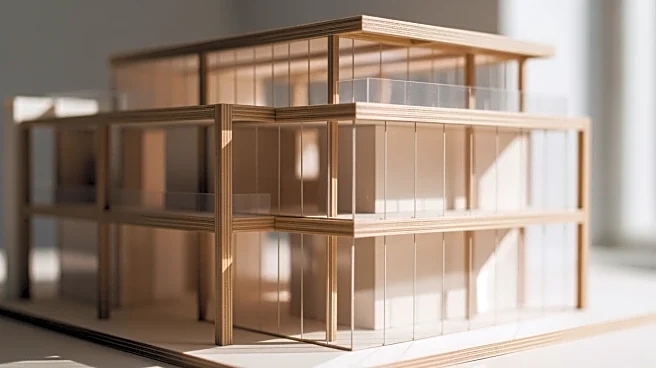What's Happening?
The Gelephu International Airport, designed by BIG – Bjarke Ingels Group, has been recognized at the World Architecture Festival in Miami for its innovative use of mass timber in a seismically active region. Located on the border of India and Bhutan,
the airport's design features a 'Forest Spine' courtyard that divides the terminal into domestic and international sections, enhancing natural light and integrating seamlessly with the landscape. The structure, built from locally sourced timber, is part of Bhutan's Mindfulness City initiative and is designed for easy disassembly and expansion. The airport is expected to accommodate 123 flights daily and welcome 1.3 million passengers by 2040.
Why It's Important?
The recognition of Gelephu International Airport highlights the growing trend of using sustainable materials in large-scale infrastructure projects. This approach not only addresses environmental concerns but also promotes cultural integration, as seen in the traditional motifs used in the airport's design. The project sets a precedent for future developments in seismically active regions, demonstrating that timber can be a viable alternative to conventional materials like concrete and steel. The airport's design also reflects Bhutan's commitment to sustainability and mindfulness, potentially influencing global architectural practices and encouraging other countries to adopt similar eco-friendly strategies.
What's Next?
As the Gelephu International Airport progresses towards completion, it will serve as a model for future airport designs, particularly in regions prone to seismic activity. The success of this project may inspire other architects and developers to explore mass timber as a sustainable building material. Additionally, the World Architecture Festival's focus on sustainability and cultural integration may lead to increased interest in similar projects worldwide. The festival's conclusion with guided tours and a gala dinner will further celebrate the achievements of architects and designers, potentially fostering collaborations and innovations in sustainable architecture.
Beyond the Headlines
The use of timber in the Gelephu International Airport not only addresses environmental sustainability but also raises questions about the cultural significance of architecture. By incorporating traditional Bhutanese motifs, the design bridges the gap between modern infrastructure and cultural heritage. This approach may encourage architects to consider the cultural implications of their designs, promoting a deeper understanding of the communities they serve. Furthermore, the project's emphasis on mindfulness and sustainability aligns with global efforts to combat climate change, highlighting the role of architecture in shaping a more sustainable future.














